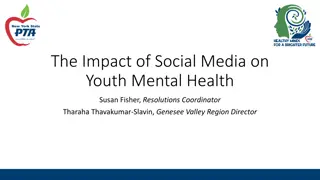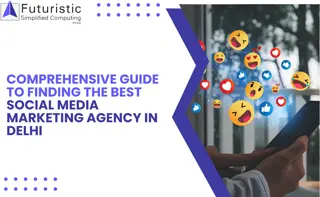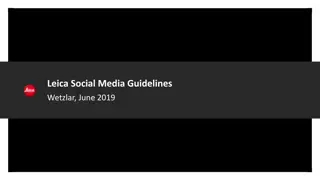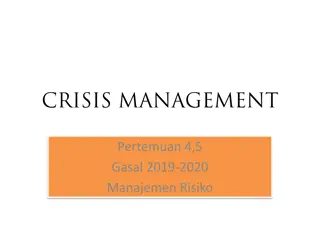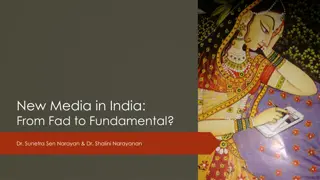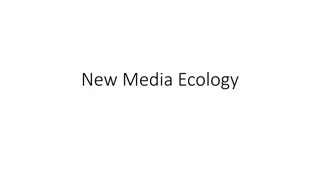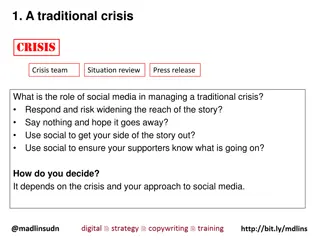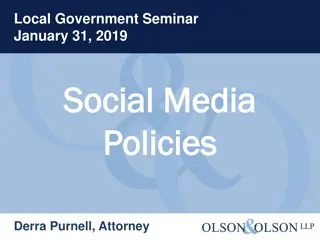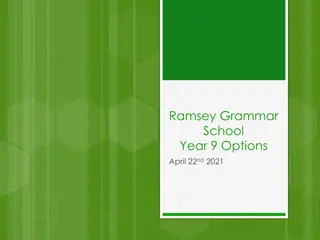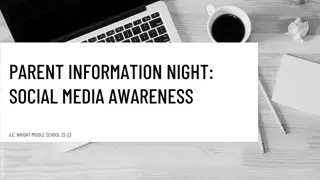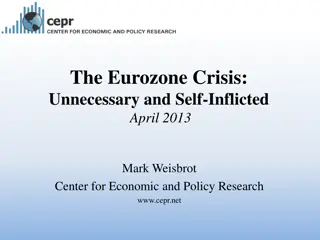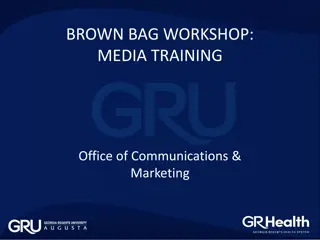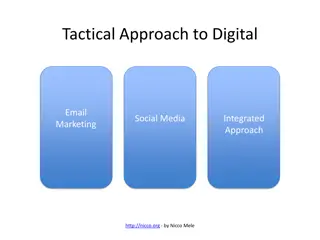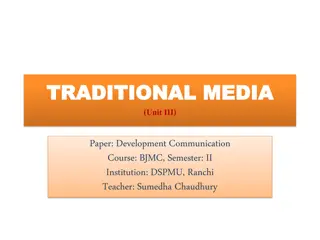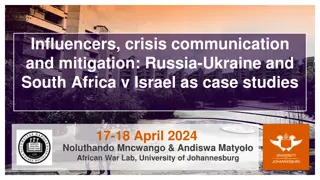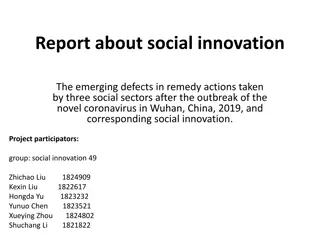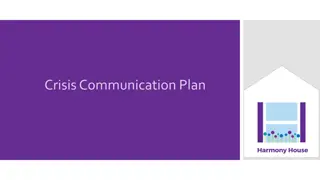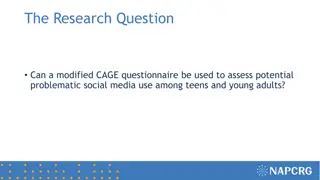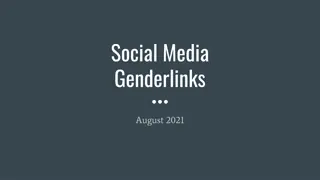The Role of Social Media in Crisis Communication: An Emerging Trend
Explore the use of social media in crisis communication through real-life examples like the US Airways Flight 1549 crash in the Hudson and the Station Fire in Southern California. Understand the definition of social media as a tool for democratizing information and discover its impact on transforming from content consumers to producers. Witness how Twitter played a pivotal role in reporting the US Airways incident and learn about the advantages of using new media in engaging with audiences and reaching targeted demographics swiftly.
Uploaded on Sep 13, 2024 | 0 Views
Download Presentation

Please find below an Image/Link to download the presentation.
The content on the website is provided AS IS for your information and personal use only. It may not be sold, licensed, or shared on other websites without obtaining consent from the author. Download presentation by click this link. If you encounter any issues during the download, it is possible that the publisher has removed the file from their server.
E N D
Presentation Transcript
Use of Social Media In Crisis Communication
An Emerging Trend Crisis Communication Two examples: US Airways Flight 1549 Crash in Hudson (citizen journalist using new media) The Station Fire in Southern California (2009) (incident use of new media and PR protocol)
A Definition of Social Media Social media is media designed to be disseminated through social interaction, created using highly accessible and scalable publishing techniques (think cell phones). Social media uses Internet and web-based technologies to transform broadcast media monologues (one to many) into social media dialogues (many to many). It supports the democratization of knowledge and Information, transforming people from content consumers into content producers. Source: http://en.wikipedia.org/wiki/Social_media
Theres a plane in the Hudson. First reporting of US Airway Flight 1549 plane crash in the Hudson River via Twitter.
A Twitter Moment? First photo that the world saw of the US Airway Flight 1549 plane crash in the Hudson River via Twitter. Source: http://twitpic.com/135xa
Its here so what do we do with it? Just another tool in communication toolbox this one just tweets Same rules about communication apply Remember it s a conversation
New Media: Use it or Not? Only one decision to make: Let your audience talk with you online, or let them talk about you. Source: http://www.piersystems.com/go/doc/1533/263958/
Advantages of Using New Media You can affect the reputation of your agency by engaging in online dialogues You can reach your targeted audience directly and quickly online You can reach media sources easily since news reporters make extensive use of new media during events Source: http://www.piersystems.com/go/doc/1533/263958/
Think of cell phones as instant online publishing devices Wide variety of data formats: Text Photos Videos Voice PDF Documents Google Maps Connections to: Facebook Twitter My Space RSS Flickr Instant Messaging
What has changed in crisis communication? Instant publishing in real time New publishing tools (cell phones) Rapid distribution of news directly to audiences Easier and faster collaboration among agencies Greater risk from miscommunication Easier and faster to correct misinformation Better remote access to wireless services New incentives to engage with your audience (i.e. reputation management for host, best source of information)
What hasnt changed? Host agency directives and mission Message coordination Incident management protocol Use of PIOs in the field Message monitoring Rumor control
Best Practices Coordinate all messages with chain of command Speak as a unified voice for all agencies Avoid talking about policy stick to the incident Do not admit guilt, responsibility, or complicity Run drills and practice protocols Use micro-blogs to distribute breaking news
What the IMTs should consider: The 3 Ds Develop team social media policy and procedures PIOs to develop a draft social media plan Include expectations for personal behavior Designate who will be the online spokespeople Drill
The Station Wildfire (2009) Use of social media Surveys after 2003 fires public newsletters When smoke or active fire, hourly Twitter updates Coordination center also monitored updates multiplied the efficiency of information Developed term cleats closeout tweets BUT Relatively low number of followers Orange County told folks NOT to rely solely on Twitter for evacuation orders
The Station Wildfire (2009) A Burned Forest and a Burned Forest Service Reputation
Hold Your PIOs Close Rely on advice/counsel Make sure agency policy is considered PIOs sit in on the interviews If doing an interview, prepare for it: Key messages Practice (murder boards)











